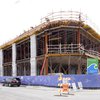First Time Home Buyer Incentive

In September 2019, the federal government of Canada initiated a new incentive program called the Canadian First Time Home Buyer Incentive. As the name implies, the program helps families across the country buy their first home through home buyer grants of up to 10% of the purchase price. This new incentive therefore increases the buyer’s equity in the home, thereby reducing mortgage interest costs and making property ownership more accessible.
Essentially, the program is a shared-equity mortgage from the Government. A shared-equity mortgage can be defined as an arrangement between the borrower and the lender whereby at the time of sale, the equity received for the house is allocated between the borrower and lender as per the initial equity contribution that each put in at the time of purchase. Specifically for the First Time Home Buyer Incentive, the following options are offered:
- 5% or 10% of the purchase of a newly constructed home by a first-time buyer
- 5% of the purchase of an already constructed home by a first-time buyer
- 5% of the purchase of a new or resale mobile/manufactured home by a first-time buyer
If the incentive is applied and awarded, then the Government becomes a shared investor in the home and participates in both the upside and downside of the underlying asset value of the home. This incentive must be repaid after 25 or when the home is sold – whichever comes first. As with any shared-equity arrangement, the amount to be paid back is 5% (or 10%) depending on the initial equity contribution that the incentive program totals up to on the purchase of the home.
However, there are certain criteria that have to be met to qualify for this in Ontario and across Canada. Below is a detailed list of the baseline things you need to know about the incentive program governed by the CMHC.
Eligibility
The program is only open to Canadians who have never bought a home before and/or homeowners who have been through a divorce or dissolution of a common law partnership. In addition to these, one further group that is eligible for the incentive program includes people who have lived in a residence that was owned by their spouse or common law partner for the last four years. In addition to ticking any of the boxes above, the applicant also has to meet all of the parameters below:
- You are a Canadian citizen, permanent resident (PR) or non-permanent resident holding a valid work authorization in Canada.
- Annual household income under $120,000: The annual household income of the applicant (known as the “qualifying income”) must be under this threshold to meet eligibility requirements. Qualifying income includes income earned from capital gains, dividends and rental properties, in addition to the employment salary. As of May of 2021, people purchasing a home in either Toronto, Vancouver, or Victoria are able to apply for the FHTBI if their household income is under $150,000.
- You can meet the minimum down payment amount with your savings, withdrawal from RRSP or a non-repayable gift from a relative or family member: As stipulated by the CMHC, the minimum down payment is 5% of the first $500,000 of the total purchase price, and then 10% for any amount above that. For instance, on a $600,000 house, the minimum down payment would be (5% of $500,000) + (10% of $100,000) = $35,000.
- Total amount of down payment is under 20% of the home price: Collectively, the total down payment i.e. initial equity that the buyer puts into the house cannot exceed 20% of the total purchase price. Please note that this amount includes the sum provided by the First Time Home Buyer Incentive program.
- Total borrowings do not exceed 4x the qualifying income (4.5x the qualifying income in Toronto, Victoria, and Vancouver): With a cap of $120,000 on qualifying income (except for Toronto, Vancouver, and Victoria as of 2021 which cap income at $150,000), buyers have to borrow $480,000 or less. This amount includes the size of the mortgage being taken out, the mortgage insurance, and amount received from the First Time Home Buyer program.
The Mechanics of the Incentive
As noted above, the first-time home buyer is entitled to receive up to 5% for a home that is already constructed or 10% on a newly constructed home. Once this is awarded, the buyer can make the mortgage payment with their bank/lender as per convention. However, since the buyer now has to borrow a lower amount from the bank, their equity in the home is now increased. That reduces the mortgage amount borrowed and can help them save $100 – $300 per month as per calculations conducted by the Federal Government.
It is pertinent to note that during the time that the incentive is activated, the buyer does not make any ongoing principal or interest payments to the Government. Repayment only has to be done at the 25-year mark or when the home gets sold. However, this repayment amount is theoretically uncapped. Since the First Time Home Buyer Incentive is a shared-equity program, the Government participates in both the risks and rewards of the property markets with the buyer. Hence, if property values rise, then the buyer has to pay more than the amount borrowed. The converse applies if property values fall.
If this is confusing, here’s an illustration:
Imagine a first-time buyer who buys an existing home for $500,000 using the program. As per the terms of the program, the buyer receives $25,000 from the Government (5% of $500,000). In 10 years, the buyer then wishes to sell this home. At that time, the existing property value is $600,000. Hence, once the sale closes, the buyer will owe the Government $30,000 (5% of $600,000).
2021 Update to the First Time Home Buyers Incentive
On May 3, 2021, the Canadian government and the CMHC updated some of the terms of their FHTBI (First Time Home Buyer Incentive). As of May 2021, the qualifying criteria for the FHTBI has expanded in higher priced real estate markets such as Toronto, Vancouver, and Victoria, to make it easier for firs-time homebuyers to get into the real estate market in these major city centre.
The updates to the FTHBI makes it easier for new home buyers who are buying their first home to qualify for a mortgage and potentially lowering their monthly mortgage payments.
The new updates include the following for those purchasing in Toronto, Vancouver and Victoria:
- The maximum annual household income threshold was increased to $150,000 from the original $120,000.
- In these major markets, the maximum borrowing amount has been increased to 4.5 times the annual household income.
- All other elements of the incentive will remain unchanged.
Is the First Time Home Buyer Incentive Right for me?
Depending on your financial profile and preferences, you may find that the First Time Home Buyer Incentive may be a good fit or not for you. Use this link to access incentive calculators and other resources to evaluate its merits for your individual purchase. If it doesn’t seem the best option for you, no need to worry! There are a few other grants or rebates offered by the Government that you may be eligible for and may want to utilize instead. These include:
- Home Buyers’ Amount ( https://www.canada.ca/en/revenue-agency/services/tax/individuals/topics/about-your-tax-return/tax-return/completing-a-tax-return/deductions-credits-expenses/line-31270-home-buyers-amount.html )
- GST/HST New Housing Rebate ( https://www.canada.ca/en/revenue-agency/services/tax/businesses/topics/gst-hst-businesses/charge-collect-home-construction/new-housing-rebate.html )
- Home Buyers’ Plan ( https://www.canada.ca/en/revenue-agency/services/tax/individuals/topics/rrsps-related-plans/what-home-buyers-plan.html )
Contact the team by email at info@clovermortgage.ca or call us at 416-674-6222 to speak with a qualified mortgage broker today to figure out your next steps in buying a home!





